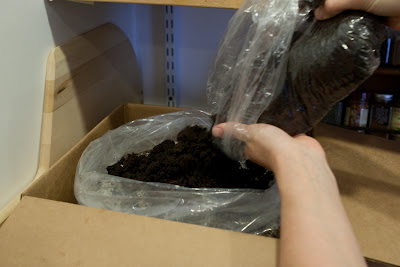I just upgraded from a Canon 30D DSLR to a 5D Mark II. Here are my preliminary thoughts after a day of use, as someone who’s never owned a full-frame DSLR before.
The first and most obvious thought I have is: what unbelievable clarity. It seems to come from a combination of a massive LCD on the back with 4x more resolution and seeing MUCH more of the world through the viewfinder. It’s like getting a new set of eyes — I had no idea all this stuff was out there. I also feel less removed from the scene, more immersed. Looking through the old 30D now feels like peering through a tunnel.

The next big shock is that my lenses are all different now. Not having the 1.6x zoom factor is a big deal. I used to have a 30mm prime (effective 48mm), but usually rely on my 24-70mm lens as my main “walk around lens”, because it was effectively 38-112mm. Now my 24-70 is *really* 24-70, and it’s amazing to see how truly wide-angle 24mm really is. I even get a bit of moving-fisheye effect. Considering I have very little interest in landscape photography (and mostly focus on portraits), the whole 24-50mm range isn’t very interesting to me. I find myself either using the ‘nifty 50’ for simple creative stuff, or using my 70-200 as the walk-around lens. What a shift!

A scary thing is that RAW file size has gone from from ~8MB to ~24MB. It’s no longer painless to access my photos over a NAS drive via 802.11N wi-fi. I’m clearly going to have to move the whole photo library to a ‘miniature’ 500GB disk plugged directly into USB, and then be sure to back up this disk alongside my NAS disk.

There’s a nice bevy of UI improvements. It’s clear that Canon knows their target audience is professional photographers, since the cheesy “automatic modes” (portrait, sports, landscape, etc.) are gone from the dial. Fair enough. But I’m baffled as to why they added a dedicated button on the back to flip “picture modes”, which are modes that strategically modify the hues and saturations of photos as you take them. Does anyone actually use them, even in older generations of this camera? Everyone I’ve ever met turns off the feature altogether (selects ‘neutral’ or ‘faithful’ modes). We all adjust the colors in post-production anyway. The whole feature smells of the automatic modes they’ve already nixed.

The two party tricks of this DSLR are the live-view feature (just like point-n-shoot cameras) and the ability to record HD 1080p video at 30 frames/sec. Pretty impressive stuff. I doubt I’ll ever use the live view mode, and I’ve not quite figured out how to shoot video well. Of course, when 3 minutes of video takes up a whole gigabyte of space, I’m going to be conservative with it!
But still, if somebody said, “hey, your DSLR now has live-view mode on its rear LCD”, what would you expect the interface to be? Just a button that flips it on and off, right? Sure. What else would it possibly be? Hmmm. There’s definitely a dedicated button to activate the feature, but pushing the button seems to convert the camera into an entirely different beast. Suddenly controls don’t work the same, you have to choose one of three alien autofocusing modes (including one which does continuous facial recognition!). Making it autofocus actually momentarily *interrupts* the live view. Everything seems weird, and even weirder when shooting video. I’ve still not figured out how to make it continuously autofocus during video recording — maybe it’s not possible at all. I need to study the manual more. (But the video quality is VERY impressive nonetheless. One less gadget to carry on outings with kids!)

Overall, I’m amazed. But as with any new tool, I’ve got a lot of learning to do.











